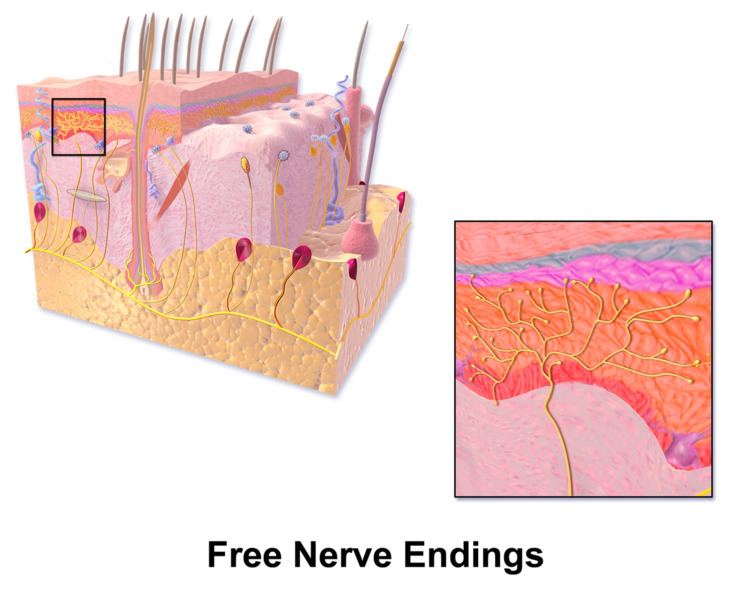Code TH H3.11.06.0.00002 | ||
 | ||
Latin terminatio neuralis libera | ||
A free nerve ending (FNE) is an unspecialized, afferent nerve ending of a sensory neuron. Afferent meaning bringing information from the body's periphery toward the brain. They function as cutaneous nociceptors and are essentially used by vertebrates to detect pain.
Contents
Structure
Free nerve endings are unencapsulated and have no complex sensory structures. They are the most common type of nerve ending, and are most frequently found in the skin. They mostly resemble the fine roots of a plant. They penetrate the dermis and end in the stratum granulosum. FNEs infiltrate the middle layers of the dermis and surround hair follicles.
Types
Free nerve endings have different rate of adaptation, stimulus modalities, and fiber types.
Rate of adaptation
Different types of FNE can be rapidly adapting, intermediate adapting, or slowly adapting. A delta type II fibers are fast-adapting while A delta type I and C fibers are slowly adapting.
Modality
Free nerve endings can detect temperature, mechanical stimuli (touch, pressure, stretch) or danger (nociception). Thus, different free nerve endings work as thermoreceptors, cutaneous mechanoreceptors and nociceptors. In other words, they express polymodality.
Fiber types
The majority of Aδ (A delta) fibers (group III) and C (group IV) fibers end as free nerve endings.
